Bayrocin Tablets for Cats: Complete Guide on Uses, Dosage, Safety, and Side Effects
With a broad-spectrum profile and effective tissue penetration, Bayrocin offers fast-acting relief for conditions affecting the skin, respiratory tract, gastrointestinal system, urinary tract, and more. we will explore what Bayrocin is, its indications, benefits, dosage, precautions, side effects, and veterinary research supporting its use—along with practical guidance for cat owners.
What Are Bayrocin Tablets?
Bayrocin Tablets are veterinary antibiotic tablets that contain Enrofloxacin, a fluoroquinolone-class antimicrobial. Bayrocin interferes with bacterial DNA replication, halting cell division and leading to bacterial death. It is a bactericidal antibiotic effective against a wide range of Gram-positive and Gram-negative organisms.
Indications: When Are Bayrocin Tablets Prescribed for Cats?
Bayrocin Tablets, containing the antibiotic enrofloxacin, are prescribed to treat a variety of bacterial infections in cats. Their broad-spectrum activity makes them effective in many clinical situations, including:
Respiratory Infections
Used to treat upper and lower respiratory tract infections such as bronchitis, pneumonia, and rhinitis, especially those caused by Pasteurella, Bordetella, or E. coli.
Urinary Tract Infections (UTIs)
Prescribed for infections of the bladder and kidneys, particularly bacterial cystitis and pyelonephritis, often involving E. coli, Proteus, or Pseudomonas.
Skin and Wound Infections
Effective for abscesses, bite wounds, and pyoderma caused by bacterial contamination, especially common in outdoor or injured cats.
Gastrointestinal Infections
Recommended when vomiting or diarrhea is caused by bacterial pathogens such as Salmonella, Campylobacter, or Clostridium spp.
Ear Infections (Otitis Externa/Media)
Prescribed in cases of bacterial ear infections, particularly those involving resistant strains like Pseudomonas aeruginosa.
Bone and Joint Infections
Used for osteomyelitis and joint infections, especially following surgery or trauma, where deeper tissue penetration is needed.
Systemic Infections
Indicated in severe blood-borne infections or sepsis, where rapid antibacterial action is critical.
Benefits of Using Bayrocin in Cats
- Fast-acting and effective against a broad range of pathogens
- Excellent tissue penetration, especially lungs, skin, and urinary tract
- Once-daily dosing enhances owner compliance
- Low risk of resistance when used as prescribed
- Can be used in both acute and chronic infections
Dosage and Administration of Bayrocin Tablets for Cats
Bayrocin Tablets, containing enrofloxacin, must be administered carefully and exactly as prescribed by a licensed veterinarian. Incorrect dosing or premature discontinuation can lead to treatment failure or antibiotic resistance.
General Dosage Guidelines
The typical recommended dosage of enrofloxacin (Bayrocin) for cats is:
| Body Weight (kg) | Recommended Dose | Frequency | Duration |
| 2–3 kg | 5–7.5 mg/kg | Once daily (PO) | 5–10 days (avg.) |
| 3–5 kg | 15–25 mg | Once daily | As directed by vet |
| 5–7 kg | 25–35 mg | Once daily | Typically 7 days |
PO = per os (by mouth)
Always confirm the final dose with your veterinarian, as dosage may vary depending on infection severity and cat’s health condition.
How to Administer Bayrocin Tablets to Cats
- Give With or Without Food
- Can be given on an empty stomach, but if your cat vomits, give with a small amount of food next time.
- Avoid mixing with dairy products as calcium may affect absorption.
- Pill Administration Tips
- Use pill pockets or hide the tablet in a treat or small amount of wet food.
- If administering directly, place the tablet at the back of the tongue and gently close your cat’s mouth until swallowed.
- Hydration
- Ensure your cat has access to fresh water during treatment to support kidney function.
Duration of Treatment
- Most infections: 5–10 days
- Chronic or severe cases (e.g., osteomyelitis): up to 14–21 days, if advised by a veterinarian.
- Treatment should continue for at least 2–3 days after symptoms resolve to ensure complete eradication of the infection.
Important Administration Warnings
- Avoid co-administration with iron supplements, calcium, magnesium, or sucralfate, which can interfere with absorption.
- Do not use beyond the prescribed course to avoid antibiotic resistance.
Safety Precautions, Contraindications, and Side Effects of Bayrocin Tablets for Cats
Bayrocin Tablets (Enrofloxacin) are effective in treating bacterial infections in cats, but like all medications, they should be used with caution and only under veterinary supervision. Understanding the safety measures, potential risks, and when the medication is not appropriate is essential to ensure your cat’s well-being.
Safety Precautions
- Veterinary Supervision Required: Bayrocin should only be used when prescribed by a veterinarian after confirming a bacterial infection.
- Use the Correct Dose: Follow the prescribed dosage and duration strictly to avoid resistance or toxicity.
- Monitor for Adverse Reactions: Keep an eye out for vomiting, diarrhea, or lethargy during treatment.
- Avoid Sunlight Exposure: In rare cases, fluoroquinolones may cause photosensitivity; keep your cat indoors if possible during treatment.
- Avoid Crushing Unless Advised: Some cats may be sensitive to the taste; consult your vet about pill pockets or hiding the tablet in food.
Contraindications
Bayrocin should not be used in the following cases:
- Kittens Under 8 Weeks Old: Can cause cartilage damage and joint issues in growing kittens.
- Cats with Seizure Disorders: May lower the seizure threshold, increasing the risk of convulsions.
- Known Allergy or Sensitivity to Fluoroquinolones: Avoid use in cats previously reacting to enrofloxacin or related antibiotics.
- Pregnant or Lactating Cats: Use only if the veterinarian determines the benefits outweigh potential risks.
- Cats with Severe Renal or Liver Impairment: Dosage adjustments or alternative medications may be needed.
- Concurrent Use with Certain Medications:
- Theophylline, NSAIDs, or corticosteroids may increase toxicity risk.
Side Effects of Bayrocin in Cats
Common (Mild to Moderate):
- Vomiting
- Diarrhea
- Temporary lack of appetite
- Lethargy
These side effects are usually short-lived and resolve once the treatment is completed or adjusted.
Less Common but Serious:
- Seizures (especially in neurologically compromised cats)
- Cartilage damage in kittens
- Behavioral changes (agitation, disorientation)
- Retinal toxicity (reported in very high doses)
Important: Retinal damage, though rare, can lead to vision problems or blindness in some cases if overdosed. Never exceed the vet-prescribed dosage.
When to Contact Your Vet Immediately:
Stop treatment and consult your veterinarian if your cat experiences:
- Persistent vomiting or bloody diarrhea
- Seizures or tremors
- Signs of vision impairment (bumping into objects, disorientation)
- Sudden behavioral changes
- Severe lethargy or collapse
Clinical Research and Veterinary Endorsement
Bayrocin Tablets, containing enrofloxacin, are backed by decades of veterinary use and robust clinical research. As a fluoroquinolone antibiotic, enrofloxacin is one of the most extensively studied antimicrobials in veterinary medicine, known for its broad-spectrum activity, excellent tissue penetration, and high efficacy against many feline pathogens.
Scientific and Clinical Evidence
- Veterinary pharmacokinetic studies confirm that enrofloxacin reaches high concentrations in lungs, kidneys, liver, and skin—making it particularly effective for respiratory, urinary, and skin infections in cats.
- A study published in Veterinary Dermatology Journal found enrofloxacin to be over 90% effective in treating skin and soft tissue infections in cats caused by Staphylococcus spp. and coli.
- Research in the Journal of Veterinary Internal Medicine supports the use of enrofloxacin for lower respiratory tract infections, demonstrating rapid clinical improvement within 3–5 days of treatment.
Veterinary Endorsements
- Widely recommended by veterinarians for both acute and chronic bacterial infections in cats.
- Frequently included in feline treatment protocols for bite wounds, abscesses, UTIs, and pneumonia.
- Valued for its once-daily dosing, which improves owner compliance and enhances treatment outcomes.
- Recognized as a go-to option in multi-drug resistant cases due to its reliable bactericidal action.
Global Veterinary Use
- Approved and widely used in Europe, the U.S., Asia, and India under multiple brand names, including Bayrocin and Baytril.
- Featured in WSAVA and ISFM treatment guidelines for managing serious bacterial infections in cats.
Practical Tips for Cat Owners
- Always complete the full course, even if symptoms improve early
- Store tablets in a cool, dry place
Scientific Insights
Bayrocin’s active ingredient, Enrofloxacin, is the veterinary version of ciprofloxacin (used in humans). It’s one of the most studied veterinary antimicrobials with over 25 years of field and clinical use.
Key properties include:
- Oral bioavailability of 80–100%
- Peak plasma concentration within 1–2 hours
- Long half-life in cats (~6–8 hours)
- Low binding to plasma proteins, aiding tissue distribution
Conclusion
Bayrocin Tablets for Cats, powered by the antibiotic enrofloxacin, are a highly effective and widely trusted solution for treating a range of bacterial infections in felines. Whether your cat is battling a respiratory illness, urinary tract infection, skin condition, or gastrointestinal issue, Bayrocin offers rapid relief with its broad-spectrum, bactericidal action. Backed by extensive clinical research and veterinary endorsement, Bayrocin stands out for its high tissue penetration, once-daily dosing, and low resistance risk—making it a preferred choice in both acute and chronic infections. Owners must follow veterinary instructions closely, complete the full course of treatment, and monitor their cat for any signs of side effects.







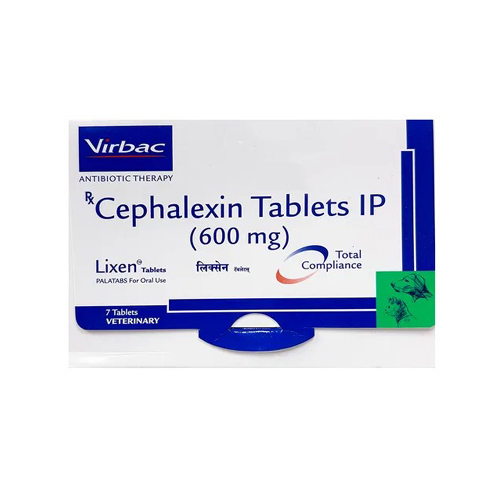
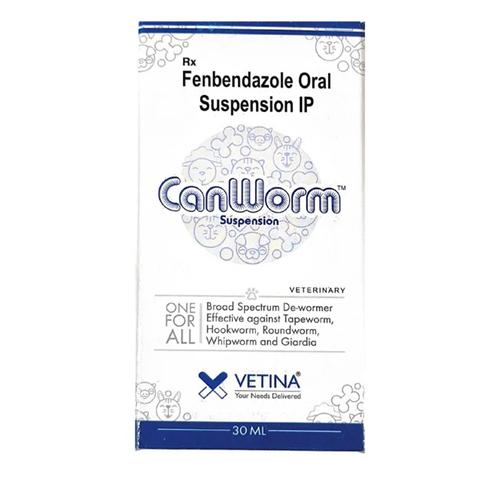




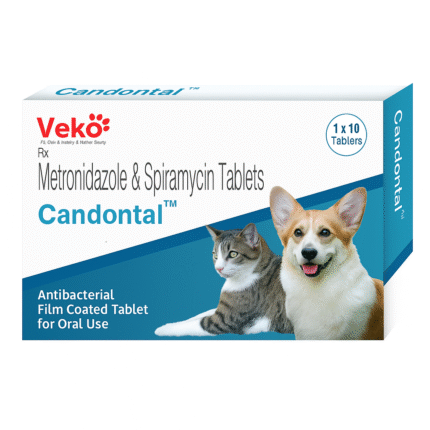
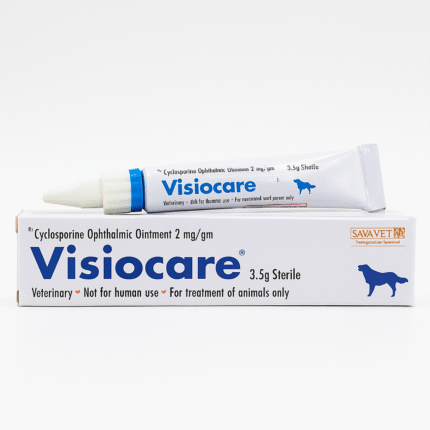
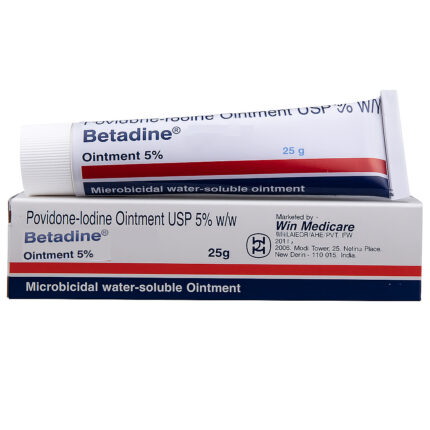



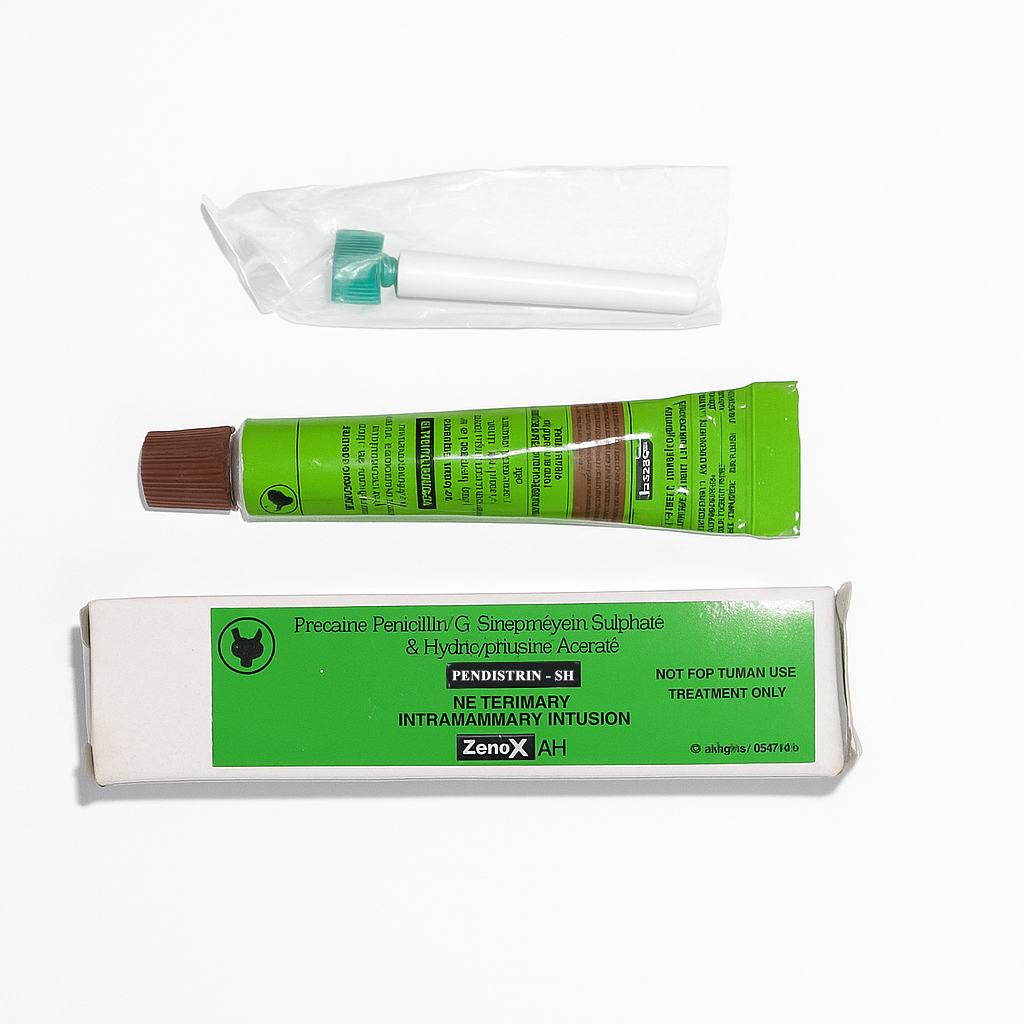

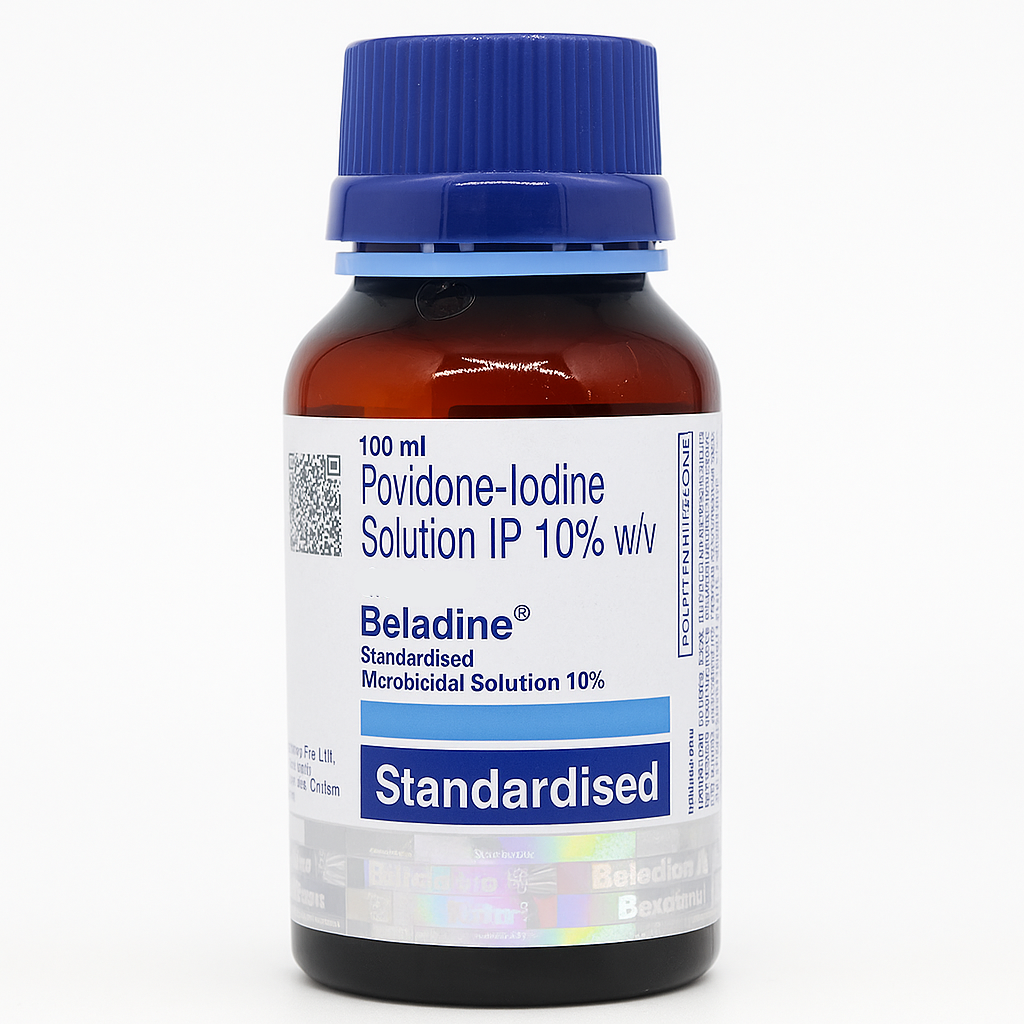


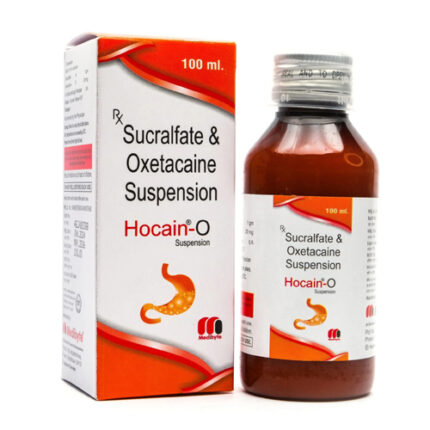
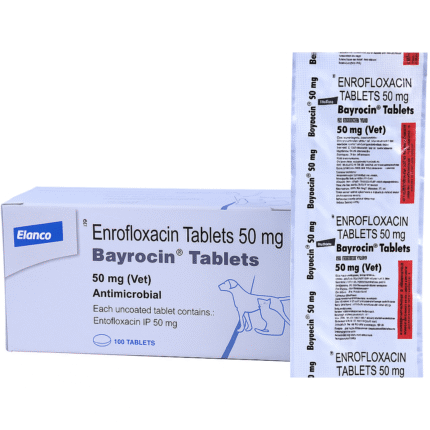
Reviews
There are no reviews yet.